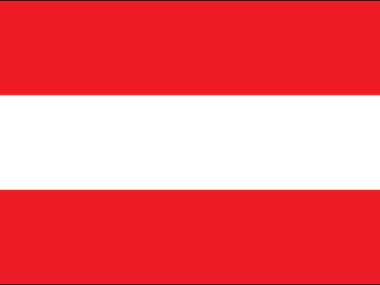Are you dreaming of working in the United States but unsure about visa sponsorship? Navigating the complexities of United States visa sponsorship as an organization or petitioner can be daunting for people. Understanding the process, requirements, and options available is crucial for a successful application. Stay tuned for expert insights and valuable tips to help you navigate the intricate world of securing a visa sponsorship in the USA from companies and the government.
USA Visa Sponsorship Takeaway
- Understanding Visa Sponsorship
- Visa sponsorship in the U.S. involves a sponsor agreeing to support a foreign national’s visa application.
- Family-Based Sponsorship
- Family members in the U.S. can sponsor relatives for visas, fostering family reunification.
- Employment-Based Sponsorship
- Employers and companies can sponsor foreign workers for visas based on job offers, filling critical skill gaps.
- Financial Sponsorship in Humanitarian Programs
- Financial sponsorship plays a crucial role in humanitarian programs, aiding individuals in need.
- Navigating the Application Process
- Successfully navigating the visa application process requires attention to detail and adherence to requirements.
- Common Challenges and Solutions
- Address common challenges like documentation errors by seeking guidance from legal experts or resources.
Understanding USA Visa Sponsorship
Visa sponsorship is essential for individuals seeking to enter the U.S. for various purposes, such as work or study. Sponsors play a crucial role in the immigration process by providing financial support and ensuring compliance with regulations. The sponsor’s responsibilities include guaranteeing the sponsored individual’s departure from the country if necessary.
The requirements for visa sponsorship vary depending on the type of visa being pursued. For instance, employment-based visas may necessitate a job offer from a U.S.-based employer, while family-sponsored visas typically require proof of relationship with a U.S. citizen or permanent resident. Different visa categories have specific criteria that sponsors must meet to qualify.
Types of USA Visa Sponsorship
Various U.S. visas and green cards mandate sponsorship, such as H-1B visas for skilled workers and EB-5 immigrant investor visas for individuals investing in U.S. businesses. Family-based sponsorship involves relatives petitioning for their family members to join them in the U.S., whereas employment-based sponsorship requires employers to sponsor foreign workers.
Financial sponsorship is crucial for humanitarian programs like refugee resettlement, where sponsors commit to supporting refugees financially during their initial period in the U.S. This type of sponsorship ensures that refugees have access to housing, food, and other essential needs as they adjust to their new environment.
Family-Based Sponsorship
To sponsor a family member for immigration to the U.S., individuals must be U.S. citizens or lawful permanent residents. Spouses, parents, children, and siblings are eligible for sponsorship under this category. For employment-based sponsorship, employers in the U.S. must demonstrate the need for a foreign worker due to a lack of qualified U.S. workers. Financial sponsorship is available under humanitarian programs such as asylum seekers or refugees who require financial support.
Sponsorship Process
Sponsoring a family member, who visa sponsors, involves submitting a petition to the U.S. Citizenship and Immigration Services (USCIS) and supporting documents proving the relationship between the sponsor and the beneficiary. Once approved, the sponsored family member can apply for an immigrant visa at a U.S. embassy or consulate in their home country. For employment-based sponsorship, employers must obtain certification from the Department of Labor before filing a petition with USCIS on behalf of the foreign worker. The financial sponsorship process under humanitarian programs requires sponsors to provide evidence of financial capability to support the sponsored individual upon entry into the U.S.
Employment-Based Sponsorship
Immediate relatives in family-based sponsorship must demonstrate a close relationship with the sponsor, such as spouses, parents, or children. The sponsor must be a U.S. citizen or lawful permanent resident to qualify for this type of sponsorship.
Employers seeking to sponsor foreign workers for U.S. visas or green cards must meet specific criteria. They must prove the need for foreign talent due to a lack of qualified U.S. workers and comply with all immigration laws and regulations.
Individuals and organizations sponsoring foreign nationals under humanitarian programs need to meet stringent eligibility requirements. These programs are designed to assist refugees, asylees, and victims of human trafficking.
Application Steps
For family-based sponsorship in U.S. immigration, the first step is filing a petition (Form I-130) proving the relationship between the sponsor and beneficiary. Once approved, the beneficiary can apply for an immigrant visa or adjust their status within the United States.
Employment-based sponsorship starts with obtaining a labor certification from the Department of Labor to show that hiring a foreign worker will not negatively impact U.S. workers. Following this, the employer files Form I-140 on behalf of the employee.
Financial sponsorship under humanitarian programs involves submitting documentation proving financial ability to support the sponsored individual(s). This includes providing evidence of income, assets, and willingness to take responsibility for their basic needs.
Financial Sponsorship in Humanitarian Programs
Key Details
The immediate relative category in family-based sponsorship offers faster processing times and higher approval rates compared to other sponsorship categories. This category includes spouses, parents, and unmarried children under 21 of U.S. citizens.
Demonstrating the unavailability of qualified U.S. workers is crucial in employment-based sponsorship. Employers must go through a rigorous process to prove that no suitable American worker can fill the position before sponsoring a foreign worker.
Programs eligible for financial sponsorship include the H-1B visa program, which allows companies to hire foreign workers in specialty occupations requiring specialized knowledge. Another program is the EB-5 Immigrant Investor Program, offering a pathway to permanent residency for investors who create jobs in the U.S.
Pros:
- Immediate relative category offers faster processing times.
- Employment-based sponsorship ensures that only necessary foreign workers are sponsored.
Cons:
- Stringent requirements exist to demonstrate the unavailability of qualified U.S. workers.
- Financial sponsorship programs may have specific investment or job creation criteria.
Navigating the Application Process
Documentation Needed
| Document | Visitor Visa (B-2) | Student Visa (F-1) | Work Visa (H-1B) |
|---|---|---|---|
| Valid Passport | Required | Required | Required |
| Visa Application | Required | Required | Required |
| Photo | Required | Required | Required |
| Application Fee | Required | Required | Required |
| DS-160 Confirmation | Required | Required | Required |
| Proof of Funds | Not required | Required | Not required |
| Letter of Acceptance | Not required | Required | Not required |
| Job Offer Letter | Not required | Not required | Required |
- Family-Based Sponsorship Applications:
- Birth certificates of both the petitioner and beneficiary.
- Marriage certificate for spousal sponsorship.
- Proof of relationship for parent/child sponsorships.
- Affidavit of Support (Form I-864) to demonstrate financial capability.
- Employer-Sponsored Foreign Workers:
- Job offer letter detailing position, salary, and job duties.
- Labor Certification approval from the Department of Labor.
- Form I-129 or I-140, depending on visa type.
- Financial Sponsorship under Humanitarian Programs:
- Evidence of financial stability to support the sponsored individual.
- Proof of relationship between sponsor and beneficiary.
Timeline and Fees
To give you a clear picture,
| Visa Type | Processing Time Range | Fees |
|---|---|---|
| Family-Based Sponsorship | Several months to several years | Filing fee, biometrics fee, additional costs for medical exams |
| Employment-Based Sponsorship | A few months to over a year | Filing fees, premium processing fees, attorney fees |
| Financial Sponsorship for Humanitarian Programs | Months to process | Application fees, legal consultation fees, translation services costs |
Common Challenges and Solutions
Overcoming Obstacles
- Families often encounter challenges in the visa sponsorship process, such as lengthy processing times and complex paperwork. To address this, seeking guidance from immigration attorneys can streamline the family-based sponsorship journey. Maintaining open communication with all involved parties is crucial to ensure a smooth process.
- In employment-based sponsorship, common obstacles include meeting specific job requirements and securing Labor Certification. One effective strategy is for applicants to enhance their qualifications through additional training or certifications to meet job criteria. Engaging with employers to understand their needs better can also help navigate potential hurdles.
- Financial sponsorship for entry into the U.S. can pose challenges related to demonstrating sufficient funds to support oneself. Applicants should meticulously prepare financial documents and seek advice on presenting a strong financial case. Exploring alternative financial sources or seeking joint sponsors can provide solutions for those facing financial constraints.
Success Stories
Real-Life Examples
Focusing on family-based sponsorship cases, there are numerous heartwarming success stories of individuals reuniting with their loved ones in the U.S. through visa sponsorship. For instance, John and Maria, separated by borders for years, finally reunited in the U.S. under a family-based sponsorship case. This emotional reunion showcases the impact of such sponsorships on families’ lives.
Employers sponsoring foreign workers for U.S. visas or green cards have also led to remarkable success stories. Companies like WeWork have sponsored talented individuals from around the globe, contributing to diversity and innovation in the U.S. workforce. One notable example is Sarah, who was sponsored by WeWork and now leads a successful team in New York City, bringing her unique skills to the company.
Financial sponsorship plays a crucial role in benefiting individuals under humanitarian programs. Through financial support, organizations enable individuals facing hardships to seek refuge or opportunities in the U.S. One compelling example is David, a refugee sponsored by an organization, who now thrives as a successful entrepreneur thanks to the support he received.
Frequently Asked Questions
Top Queries Answered
Family-based sponsorship eligibility is determined by the relationship between the sponsor and the applicant. Spouses, parents, children, and siblings are common eligible relatives for sponsorship.
Employment-based sponsorship requirements vary depending on the visa category. Employers must demonstrate the need for a foreign worker due to a lack of qualified U.S. workers.
Financial sponsorship for humanitarian programs involves proving the ability to financially support the sponsored individual. Proof of income, assets, or a joint sponsor may be required.
Closing Thoughts
As you’ve delved into the intricate world of visa sponsorship, you’ve gained insight into the diverse avenues available for pursuing your American dream. Whether through family ties, employment opportunities, or humanitarian endeavors, the path to securing a U.S. visa is multifaceted. By navigating the application process armed with knowledge and understanding common challenges, you are better equipped to overcome hurdles that may arise along the way.






